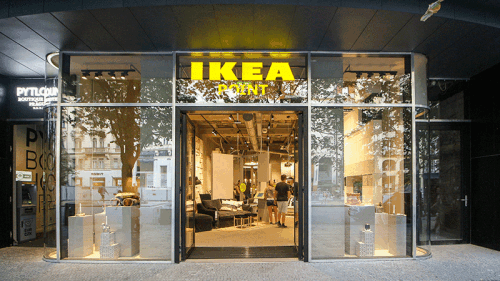Yields are stabilizing in certain european office markets, but investor caution continues, particularly in eastern europe.
The market for prime commercial office space in Europe is beginning to stabilize following a prolonged period of outward yield shifts, although it remains to be seen whether this will be sustained. Declines in rental rates have also slowed, at least for now, with rents expected to remain at current levels in major cities such as Frankfurt and Paris in the short term. The primary driving force behind the upturn appears to be an improving economic outlook—helped by stimulus packages and government interventions— though there could be further downward pressure on the rental market this year.
The financial crisis that gripped global markets following the collapse of investment bank Lehman Brothers in September 2008 pushed investor caution to new highs and the slump spread across Europe. But from the low point at the start of 2009, there have been signs of life in some markets, in part prompted by very favorable pricing. Interest has been restricted to well-let offices with secure income in the best locations, however, with the market remaining patchy outside this segment because investors are unwilling to move up the risk spectrum.
The European Commission’s Economic Sentiment Indicator for the European Union, which combines business tendency surveys into a single cyclical composite confidence indicator, improved for the eighth consecutive month in November since its trough in March. Yet the overall condition of the European office sector is not necessarily as positive as some figures would suggest, given that growth remains largely negative and many countries, including Spain, France, the Netherlands, and the U.K., to name but a few, continue to forecast rising unemployment.
Leasing activity may have strengthened in certain locations, such as the City of London, but the markets remain characterized by increasing vacancies and falling rents. The average vacancy rate throughout Europe is 10 percent, reports global property consultant Savills, one-third higher than it was in the first half of 2008. Meanwhile, take-up—total letting transactions, including companies that move from one place to another taking the same amount of space—fell on average by 44 percent over the first half of 2009 from the same period in 2008 and rents dropped by 10.5 percent in the third quarter from the previous year.
“Economic sentiment is improving, but the recovery is expected to be slow,” Eri Mitsostergiou, Savills’s associate director of European research, said late last year. “Take-up levels, although improved in some locations in the second quarter of 2009, are still considerably lower compared to last year, and prime
central business district rents are also lower in comparison to 2008. We do not expect these trends to change significantly over the next six months.”
An improved economic climate is expected this year, though it will not be until 2011 or 2012 that growth returns, real estate consulting firm King Sturge predicts. The number of office jobs will continue to decline for another 12 months before making a strong comeback over the longer term. For now, demand for office space remains weak and, in most locations, annual take-up is forecast to fall again this year. In major western European cities, a 29 percent decline in take-up was expected for 2009 after an 18 percent drop in 2008. In central and eastern Europe, a 51 percent decline in total take-up was anticipated for 2009, following strong growth in 2007 and 2008.
Given tough financial conditions, rising office availability, and weak occupier demand, office rents are unlikely to rebound before 2011. At the prime end, rents fell 14 percent over the year to mid-2009 for western European cities, compared with average growth of 6 percent in 2008. In central and eastern European markets, last year’s growth of 13 percent was entirely reversed in 2009.
London office rents have led the European downturn and continue to slide, with the West End now at £67.50 ($109) per square foot (€850 per sq m) and the City at £44 ($72) per square foot (€554 per sq m). However, there is evidence that the pace of rent decline is slowing and that the worst of the adjustment may be over. Prime rents in the West End are expected to fall to £65 ($106) per square foot (€810 per sq m) by the end of the year, with the City down to £40 ($65) per square foot (€504 per sq m). Despite the sharp rental declines, London remains Europe’s most expensive city.
While the rate of decline appears to be slowing in Europe’s financial capital, some major centers are still seeing steep drops in rents. Cities most exposed to global influences have generally been worst hit. Paris has experienced a drop of 22 percent in the past 12 months, while Dublin, Madrid, and Amsterdam have also struggled, with rent declines of 25 percent, 15 percent, and 10 percent, respectively. Rents in central and eastern Europe are also under considerable pressure. Of the larger centers, Warsaw has been particularly hard hit, with prime rents falling by 27 percent since mid-2008. Moscow is also experiencing a very sharp correction, with year-onyear rents down 42 percent.
A clear turnaround has taken place in the occupier market over the past year, with the bargaining power now firmly in the hands of tenants. This has led to more generous incentives, particularly in London, Amsterdam, and Brussels. In the City of London, for example, incentives stood at 30 months rent free for a ten-year term in September, up from 26 months in 2008. Bank of Toyko Mitsubishi took advantage of this trend in April when it secured a four-year rent-free period on its pre-let of 186,000 square feet (17,279 sq m) U.K. Property company at U.K. property company British Land’s Ropemaker scheme in a district known as the Square Mile.
Yields are stabilizing in certain markets, but investor caution continues, particularly in eastern Europe. For top-quality space in London, yields have hardened by 50 to 75 basis points to 5.5 percent in the West End and 6.5 percent in the City since the start of 2009, while Dublin and Madrid also saw an inward yield shift of 50 basis points to 7 percent and 6 percent, respectively, in the third quarter. Most other cities remained stable during the period, apart from Budapest, Bucharest, and Zagreb, where prime yields moved out by 25 basis points.
The U.K., Germany, and France continue to dominate investment activity across Europe, together accounting for over 70 percent of the €13.8 billion ($20 billion) total across all sectors in the third quarter, says property agent DTZ. Offices have been the chief beneficiary of increasing activity to date, particularly in London, compared with a stable performance from retail and a subdued interest in industrial property.
“Courtesy of its deeper repricing and potentially earlier economic recovery, the U.K. continues to offer some of the best opportunities in Europe,” says Michael Rhydderch, head of the European cross-border capital market group at real estate adviser Cushman & Wakefield. “However, with yields now starting to adjust and increasing competition for a limited supply of quality stock, other markets are quickly gaining more attention, with France in favor for the risk-averse and Poland for the more return-hungry. The Nordics are also likely to see increased activity in light of their stable markets, forecast economic recovery, and improved pricing.”
In light of a lack of bank finance, larger deals have suffered, although there were a limited number of key purchases in 2009. Some of the biggest transactions to take place in the first half included British Land’s sale of half of its 4.8 million-square-foot (445,934-sq-m) Broadgate office scheme in London to Blackstone Group in a deal that valued the U.S. private equity firm’s share at £1.07 billon ($1.7 billion). Also in London, Hammerson, a U.K. property development and investment company, sold a 75 percent stake in its 773,989-square-foot (71,906-sqm) Bishops Square building to the Oman Investment Fund for £445 million ($724 million).
In Paris, Hammerson sold its 319,700-square-foot (29,700-sq-m) Trois Quartiers asset to private equity real estate investment advisory company MGPA for €210 million ($305 million), while German investment company Deka Immobilien bought Deloitte House, a new 226,000-square-foot (21,000-sq-m) office in Warsaw’s central business district, from Swedish development/construction company Skanska for €117 million ($170 million). A significant transaction in the Spanish market was Spanish financial services group BBVA’s sale-and-leaseback of a €1.15 billion ($1.7 billion) portfolio of bank branches to a joint venture among Deutsche Bank’s RREEF Alternative Investments, AREA Property Partners, and Europa Capital.
“There are increasing signs of a loosening in the debt markets and an appetite to undertake larger deals, with at least two deals of more than €1 billion [$1.5 billion] recorded in Spain and the U.K. in the [third] quarter—the only billion-euro deals [in 2009],” points out Magali Marton, DTZ’s head of continental Europe and Middle East research. However, he adds, “Such deals remain the exception, with the majority of activity focused on smaller lot sizes as debt markets continue to operate on a restive basis while lenders continue to work out existing loans and refinancing.”
New construction in most cities has been dramatically reduced since the credit crunch, partly due to rising unemployment and a lack of pre-lets, as well as a scarcity of bank finance for development schemes. In most locations, the office pipeline has already been scaled back, yet Europe remains well supplied overall, with 27 million square feet (2.5 million sq m) due for completion by the end of 2009. One-third of this stock was to be delivered in central and eastern Europe, according to property agent Jones Lang LaSalle.
For example, in Moscow, where there is already a high level of vacancies, the pipeline for 2009 was close to 10.7 million square feet (1 million sq m). This will result in a greater choice of high-quality office space for occupiers in the short term, but supply will become much more constrained beginning in 2011 with new completions dropping this year as developers continue to suspend projects not already underway.
There also has been a marked rise in refurbishment and office fit-out activity. “Both of these tend to be the first sectors to recover from a downturn and rely less on bankers’ cautionary stance regarding development,” explains Mat Oakley, head of Savills’s commercial research department. “The evolution of the development market over the next 12 months will depend heavily on both bankers’ and politicians’ decisions.”
The future of office construction is underpinned by tenant demand, which looks fragile given the difficult economic environment. Availability levels are expected to rise further, and significant amounts of sublet space will leave rents under pressure. However, King Sturge expects the period of peak vacancy rates to be brief because the crisis put a stop to speculative development relatively early.
Looking further ahead, employment forecasts provide some reassurance about the prospects for office demand, with conditions expected to improve after this year. According to information from Capital Economics, a U.K. economic research consultancy, London is expected to witness a strong recovery during the upturn, boosted by its global attraction, buoyant demographics, and a solid economy. Other traditional business centers such as Amsterdam and Frankfurt, as well as cities including Munich and Milan, are also expected to see rapid job growth. This will eventually reignite new office development.
Although the first signs of life have emerged in Europe’s investment markets, a number of factors rule against a rapid rebound in activity. For one, occupier markets are expected to struggle throughout 2010, while bank finance for property will remain extremely tight. However, prime offices in the core western markets are well placed to ride out the storm. Appetite for secondary assets, on the other hand, remains limited.




